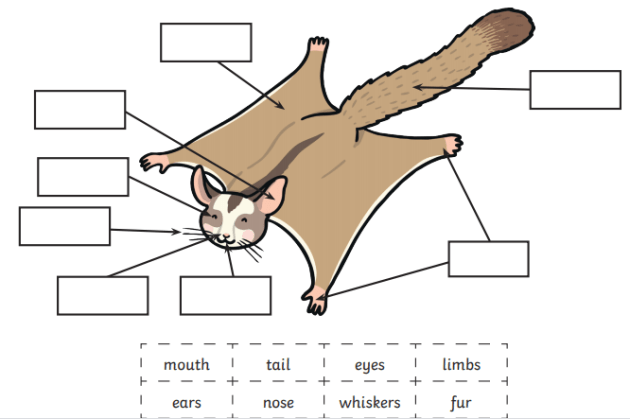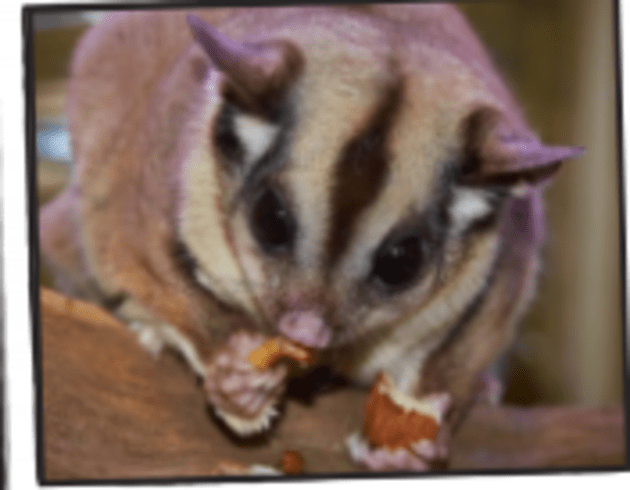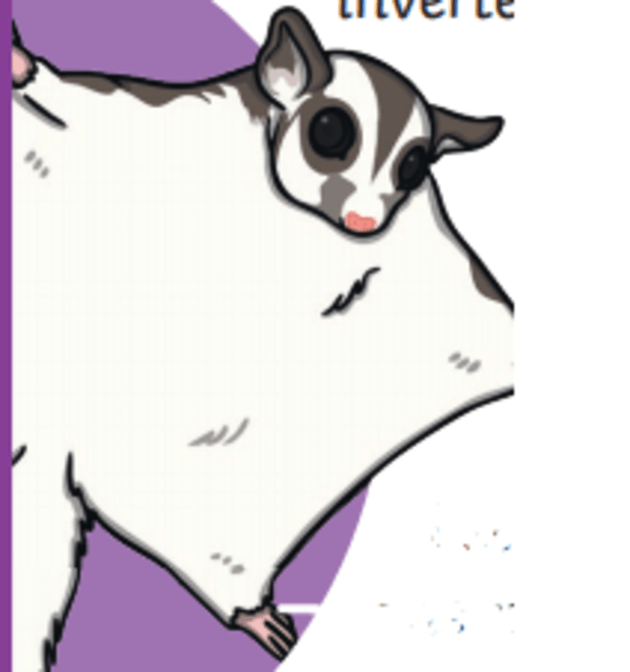


Sugar gliders are arboreal marsupials found in the forests of Australia and New Guinea. The squirrel-sized species is highly social, and lives in small colonies or family groups of up to seven adults and their offspring. They’re mainly nocturnal and spend most of their time in trees, rarely coming to the ground.
The marsupial is popular to have as a pet, although they do not cope well in homes. They can live up to nine years in the wild and require lots of space and social interaction to survive and thrive.
Sugar gliders are light, weighing between three and five ounces. They have creamy white fur on their stomach; big, black eyes that are surrounded by dark rings; and a charcoal stripe that runs down the middle of its face to its pink nose.
Sugar gliders inhabit the northern and eastern parts of mainland Australia, Tasmania, New Guinea and other associated isles. Fossils of the marsupial thought to be 15,000 years old were found in a cave in Victoria.
Sugar glider habitats are found in wooded areas with open forest, and the species appears in areas where there are many tree hollows for shelter and food. The marsupials are arboreal, meaning they find food, shelter and safety in trees. They make leaf nests in tree hollows where they shelter by day. Their territories can expand over two acres of forest, and they mark and protect them with urine and other secretions.
Sugar gliders are sympatric with the squirrel glider, mahogany glider, and yellow-bellied glider.
Sugar gliders have a soft membrane between their wrists and ankles called a patagium. This facilitates gliding from tree to tree, and acts like a parachute for the species, which can float on air for a distance of nearly 50 metres!
Their wide field of vision makes them excellent aviators, and bobbing their heads before launch allows them to survey distances. They tilt their hands and arms to direct them when airborne, adjusting the tension in their ‘wings’ as their bushy tail acts as a rudder.
Their tail is nearly as long as their 6-inch bodies, and is somewhat prehensile (meaning it’s capable of grasping), allowing them to carry leaves to their nest. As well as having five digits on each toe, opposable toes on their hind feet allow them to grip firmly onto branches. They land gracefully from flight on all four feet.

Their name derives from their proclivity to eat forest sweets like acacia gum, eucalyptus sap, and flower nectar. However, sugar gliders are actually omnivorous feeders, and survive on both plant and animal matter. They feed on the endangered swift parrot’s nestlings in Tasmania, threatening the bird’s survival.
A sugar glider’s main predators are native owls, kookaburras, goannas, snakes, quolls and feral cats.

When threatened, sugar gliders can secrete an oily substance which smells like soured fruit. They take up a defensive posture, which involves standing on their hind legs, extending their head and opening their mouth. If they’re really scared, they may even lie on their back with their feet up and vocalise!
The species communicates through scents produced from different places in males and females. Each sugar glider has its own signature scent, allowing others to recognise it. The dominant male in the family marks members of his group with saliva, so it’s easy to tell who belongs to the colony.
They also communicate through a variety of yapping, barking and hissing and droning sounds. ‘Crabbing’ communicates that they’re threatened, frightened, or have just awoken from a nap, while purring communicates contentment.
Currently, sugar gliders are classed as a low-risk species. However, habitat loss continues to threaten species all over the world, and may harm the marsupials in the future.
